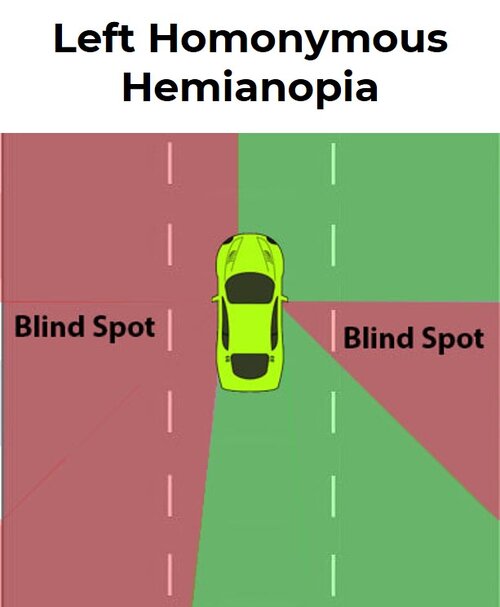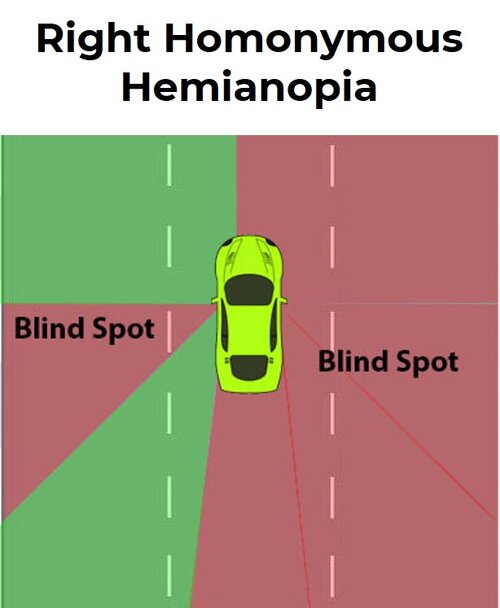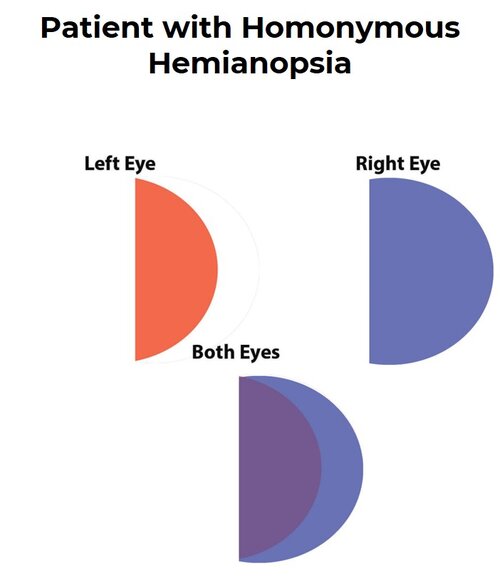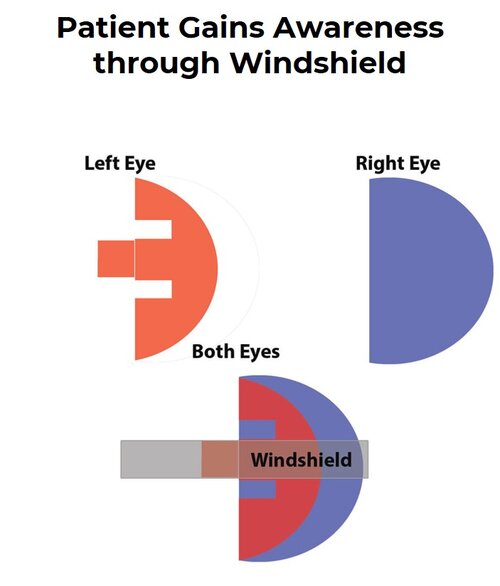The Peli Lens for Driving
One of the most frequent questions patients with homonymous hemianopsia have is, “Will I be able to drive?” The answer is usually not a straightforward yes or no because multiple factors must be taken into account before a patient can both safely and legally drive.
The good news is that Peli Lens ™ peripheral prisms offer many homonymous hemianopia patients enough visual field expansion to enable them to drive again.
On this page you’ll find an overview of the driving challenges faced by hemianopic patients as well as what solutions are currently available to help them get back on the road.
Why the Peli Lens?
The Peli Lens is the best solution currently available for expanding peripheral vision for patients with homonymous hemianopsia. Below, we’ll detail some of the information to take into consideration when determining if the Peli Lens is right for your patient.
If you’re eager to get the Peli Lens right away, use the button below to order our temporary Peli Lens kit, designed as an affordable way for your patients to determine if the Peli Lens will work for them.
Be sure to select the oblique option for driving.
Driving with Homonymous Hemianopia
Cars are made for individuals with normal vision. When driving, mirrors work to expand a fully sighted person’s visual field from about 180 degrees to as close to 360 degrees as possible. These mirrors make the driver aware of their surroundings while minimizing blind spots.
Drivers with normal vision have two blind spots, indicated with red in the image. These blind spots can be mitigated through the use of additional mirrors, newer blind spot detection technology, and, of course, the driver actively checking blind spots.
For patients with homonymous hemianopia, driving is more difficult because instead of 180 degrees of vision, they are working with roughly 90 degrees of vision. The goal is to bring their awareness to 360 degrees of vision.

While peripheral prisms may help, it’s also important to recognize that the traditional placement of mirrors may be ineffective for a patient with reduced visual field. That’s why we recommend both the use of peripheral prisms and additional vehicle mirrors.
Driving with Left vs Right Homonymous Hemianopia

A patient with left Homonymous Hemianopia loses their left side mirror

A patient with right Homonymous Hemianopia loses the rearview mirror and their right side mirror.
Understanding the driving challenges faced by homonymous hemianopia patients and how the experiences of left and right hemianopia patients differ is important so that you can give your patients the best chances of getting back behind the wheel.
Driving Solutions for Homonymous Hemianopia
There are two complementary solutions for helping hemianopia patients regain their ability to drive: Peripheral Prisms and additional mirrors. We’ll take a look at each solution in more detail below. Please note that these solutions should be used together to give the patient maximum visual field.
Peli Lens Peripheral Prisms for Driving
The oblique version of the Peli Lens can create up to 30 degrees of additional visual field on the patient’s blind side across the midline of their visual field. In some states, the Peli Lens can help meet the visual field requirements for a driver’s license.



Within the United States, minimum visual field requirements vary from state to state. Depending on the state, the field requirement can be anywhere from 105 to 140 degrees, which cannot be met by patients with homonymous hemianopsia. Restricted licenses may be available for patients who don’t meet minimum visual field requirements.
For more information on the visual field requirements of each state, visit this resource.
Additional Driving Mirrors
Along with the Peli Lens, mounting additional mirrors on their vehicles can assist homonymous hemianopia patients drive more safely. These types of mirrors may expand your patient’s visual awareness when driving.
- Extended Rear View Mirrors: these mirrors are longer than normal rear-view mirrors, allowing the driver to gain more visibility and reducing blind spots.
- Blind Spot Mirrors: these are small mirrors that typically affix directly to a side mirror to expand the amount of visibility each side mirror has.
- Towing Mirrors: these are much larger than typical side mirrors and, when strategically placed, can significantly increase the driver’s ability to see around his or her vehicle
Ready to Order the Peli Lens?
The best way to determine if the Peli Lens will help your patient is to try temporary peripheral prisms. We offer horizontal prisms for mobility and oblique prisms for driving.
To order temporary prisms, use the button below to order them directly from our ecommerce site or give us a call.
When your patient is ready for permanent prisms, which offer considerably more field expansion, contact us for help with the process and to order.

